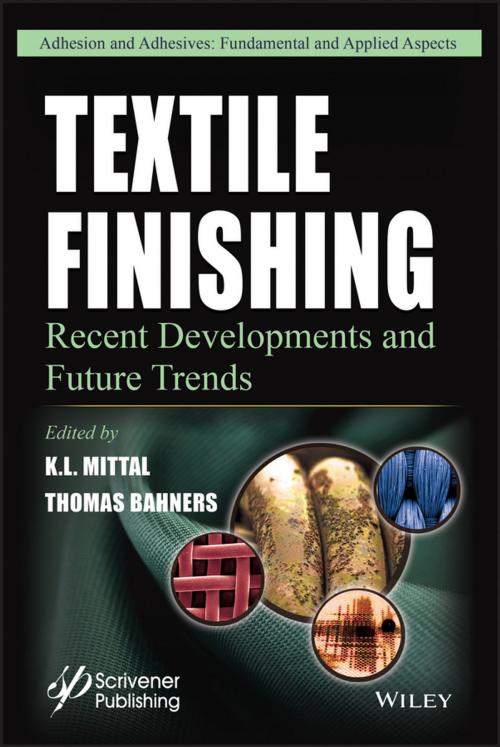Textile Finishing
Recent Developments and Future Trends
Nonfiction, Science & Nature, Technology, Material Science| Author: | ISBN: | 9781119426851 | |
| Publisher: | Wiley | Publication: | August 22, 2017 |
| Imprint: | Wiley-Scrivener | Language: | English |
| Author: | |
| ISBN: | 9781119426851 |
| Publisher: | Wiley |
| Publication: | August 22, 2017 |
| Imprint: | Wiley-Scrivener |
| Language: | English |
Textiles have been historically and traditionally used to make clothes, but even in ancient times there were technical textiles for making sails, tents, etc. Today, technical textiles are used in various industries for a host of purposes and applications. Recently, there have been exciting developments on various fronts in the textile field to impart novel and innovative functionalities to textiles, e.g., easy-to-clean or dirt-repellent, flame retardancy, anti-bacterial, and fog-harvesting properties, to name a few. Also, textiles for electronics based on graphene, CNTs and other nanomaterials, conductive textiles, textiles for sensor function, textile-fixed catalysts, textiles for batteries and energy storage, textiles as substrates for tissue engineering, and textiles for O/W separation have appeared in the literature. All this has been possible through adopting novel ways for finishing textiles, e.g., by appropriate surface modification techniques, and utilizing biomimetic concepts borrowed from nature.
This unique book entitled “Textile Finishing: Recent Developments and Future Trends” is divided into four parts: Part 1: Recent Developments/Current Challenges in Textile Finishing; Part 2: Surface Modification Techniques for Textiles; Part 3: Innovative Functionalities of Textiles; Part 4: Fiber-Reinforced Composites.
The topics covered include: Antimicrobial textile finishes; flame retardant textile finishing; “self-cleaning” or easy-to-clean textiles; metallization of textiles; atmospheric pressure plasma, and uv-based photochemical surface modification of textiles; tunable wettability of textiles; 3D textile structures for fog harvesting; textile-fixed catalysts; medical textiles as substrates for tissue engineering; and fiber-reinforced “green” or “greener” biocomposites and the relevance of fiber/matrix adhesion.
Textiles have been historically and traditionally used to make clothes, but even in ancient times there were technical textiles for making sails, tents, etc. Today, technical textiles are used in various industries for a host of purposes and applications. Recently, there have been exciting developments on various fronts in the textile field to impart novel and innovative functionalities to textiles, e.g., easy-to-clean or dirt-repellent, flame retardancy, anti-bacterial, and fog-harvesting properties, to name a few. Also, textiles for electronics based on graphene, CNTs and other nanomaterials, conductive textiles, textiles for sensor function, textile-fixed catalysts, textiles for batteries and energy storage, textiles as substrates for tissue engineering, and textiles for O/W separation have appeared in the literature. All this has been possible through adopting novel ways for finishing textiles, e.g., by appropriate surface modification techniques, and utilizing biomimetic concepts borrowed from nature.
This unique book entitled “Textile Finishing: Recent Developments and Future Trends” is divided into four parts: Part 1: Recent Developments/Current Challenges in Textile Finishing; Part 2: Surface Modification Techniques for Textiles; Part 3: Innovative Functionalities of Textiles; Part 4: Fiber-Reinforced Composites.
The topics covered include: Antimicrobial textile finishes; flame retardant textile finishing; “self-cleaning” or easy-to-clean textiles; metallization of textiles; atmospheric pressure plasma, and uv-based photochemical surface modification of textiles; tunable wettability of textiles; 3D textile structures for fog harvesting; textile-fixed catalysts; medical textiles as substrates for tissue engineering; and fiber-reinforced “green” or “greener” biocomposites and the relevance of fiber/matrix adhesion.















